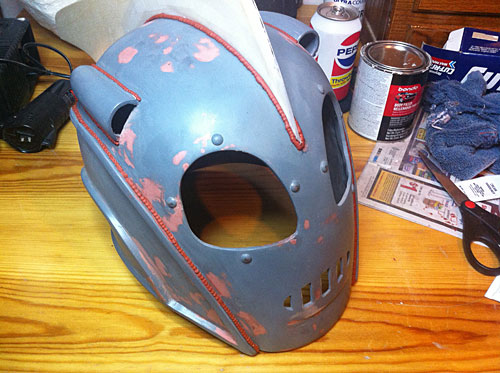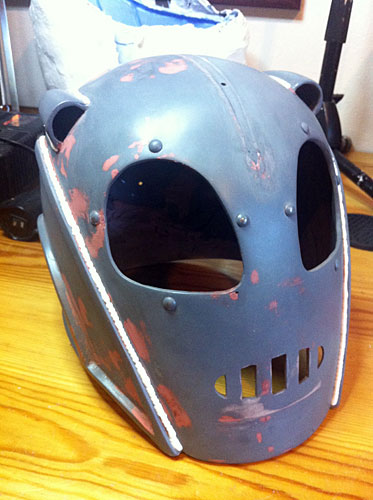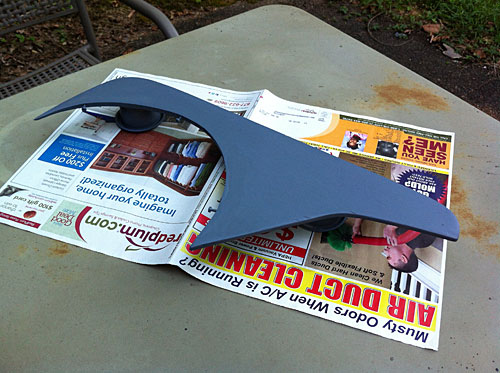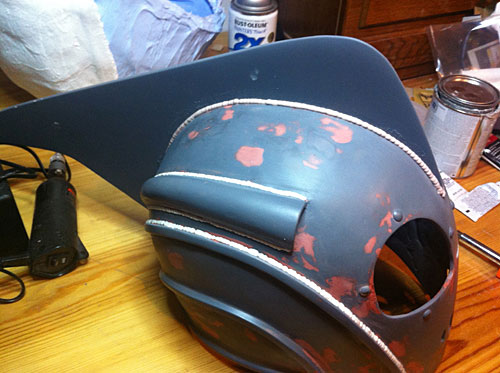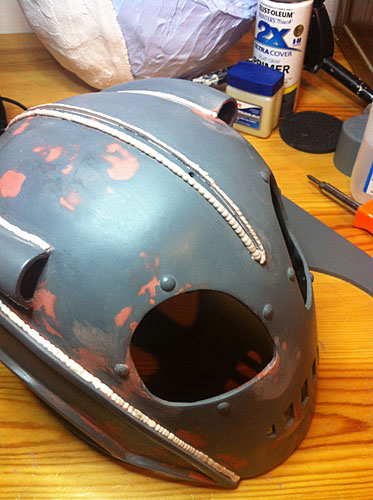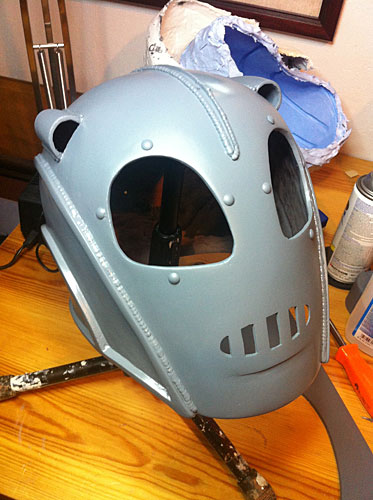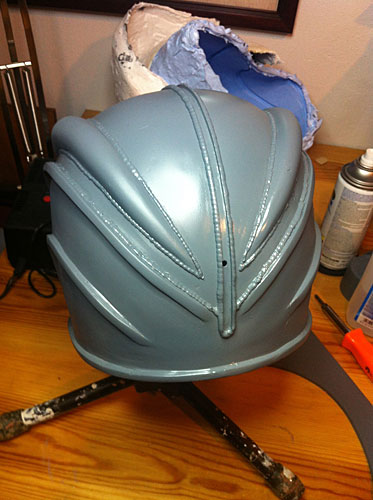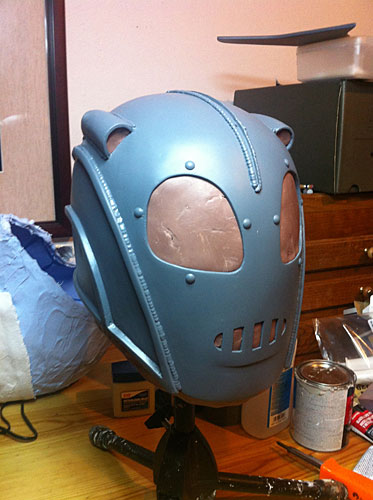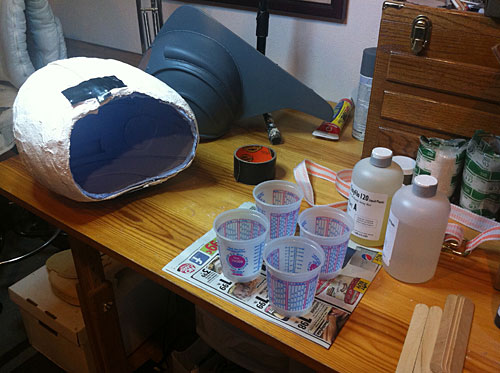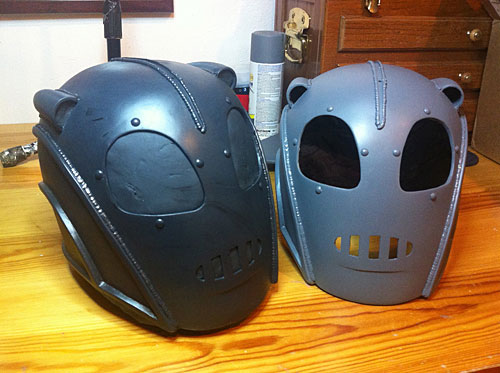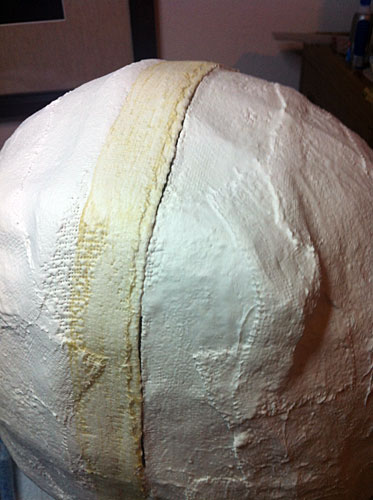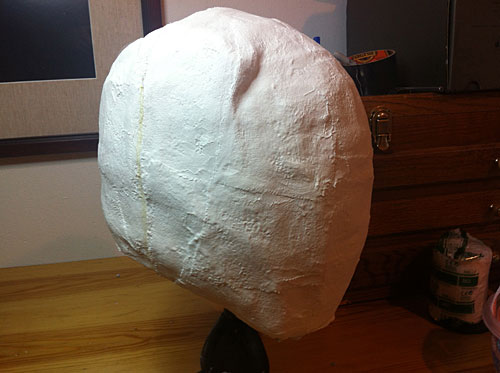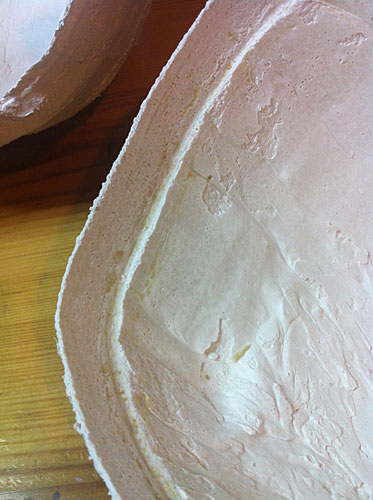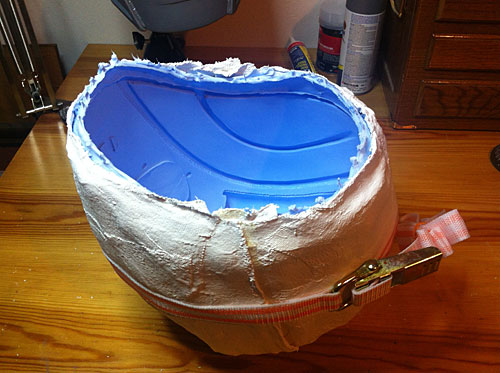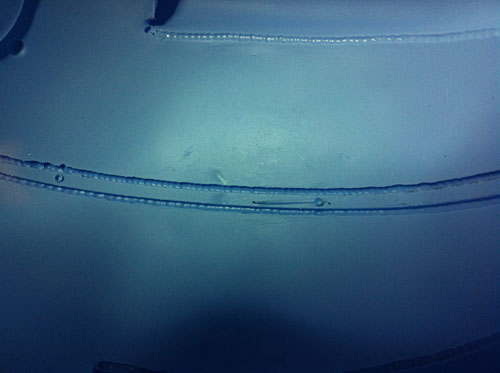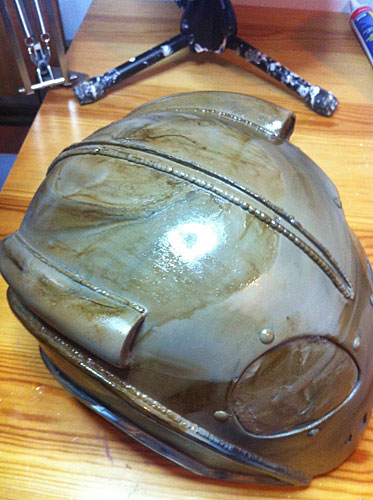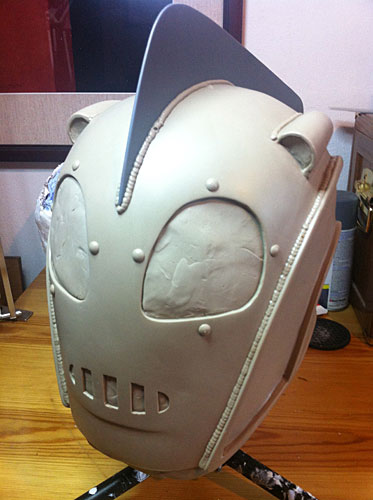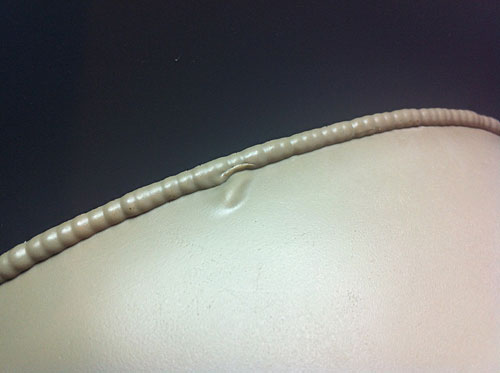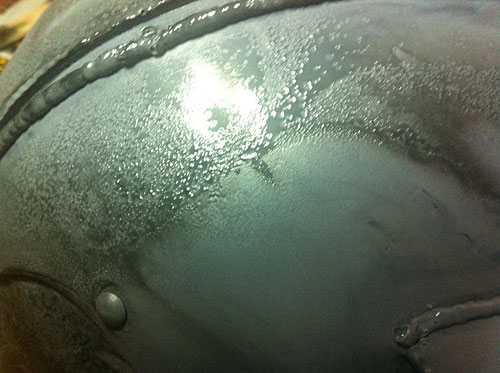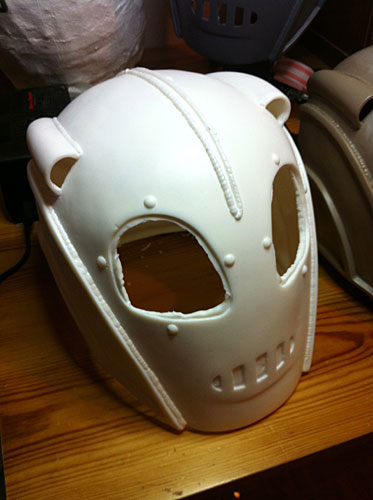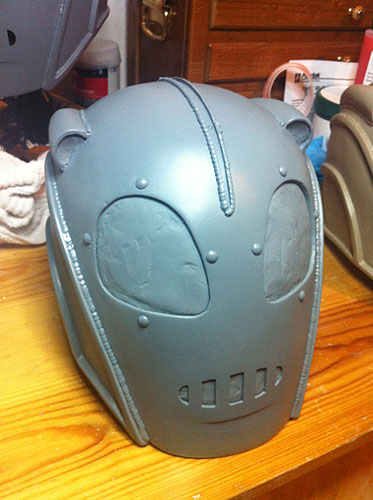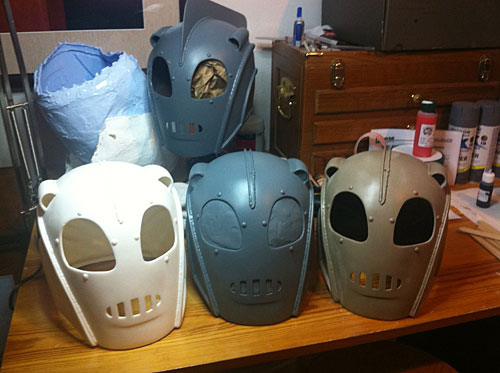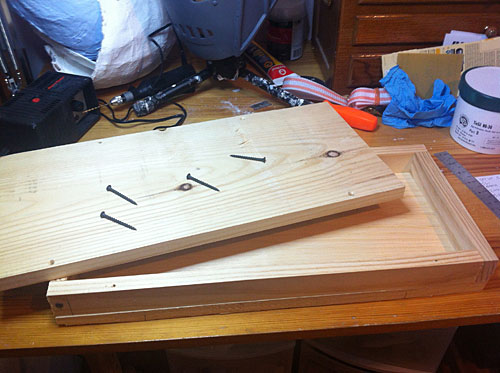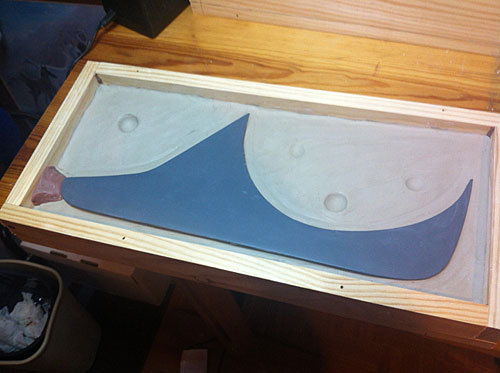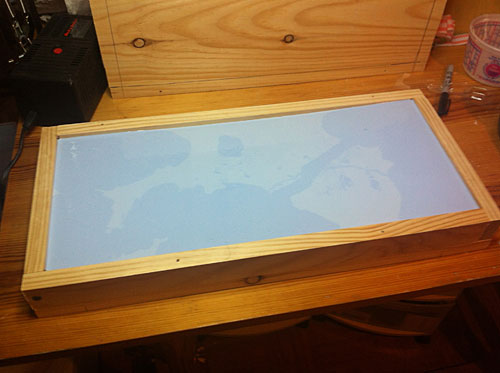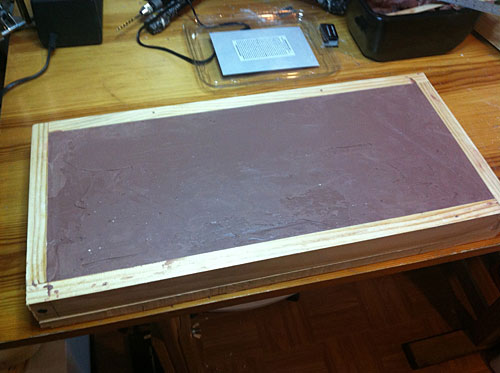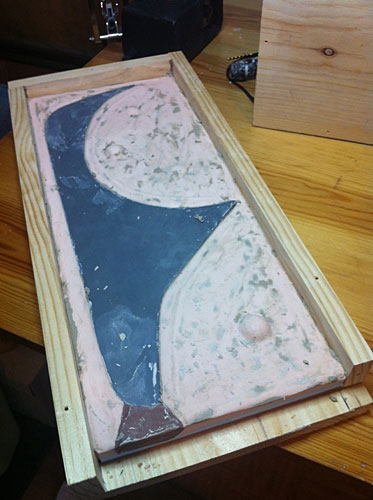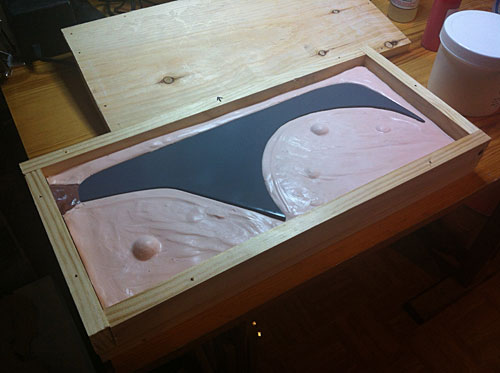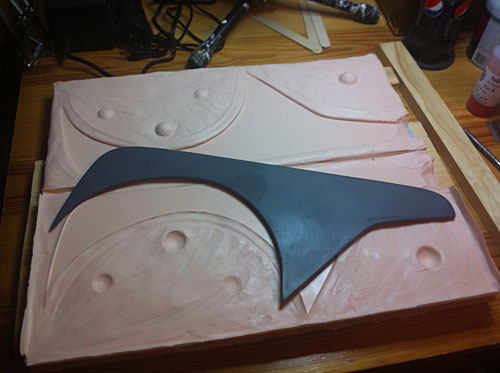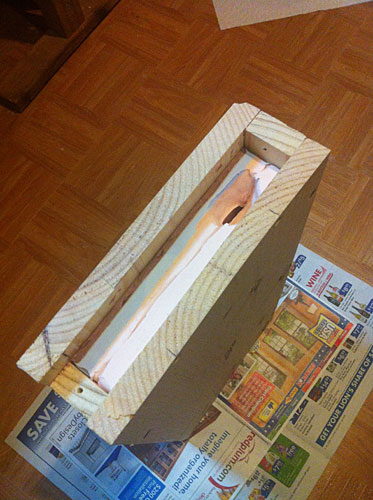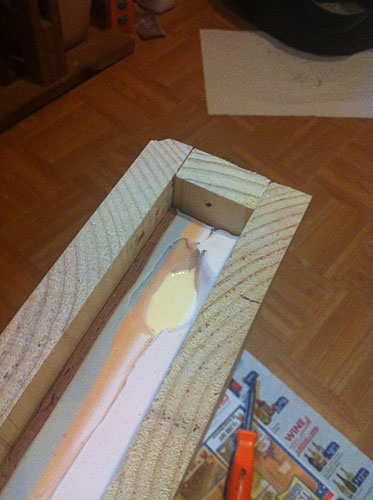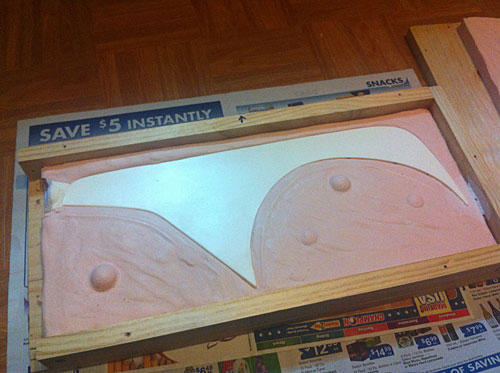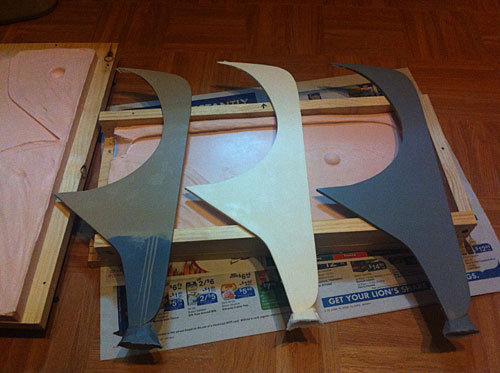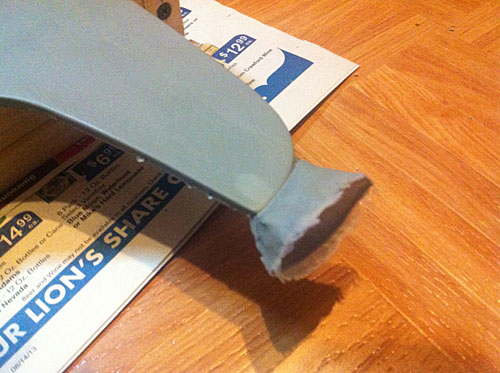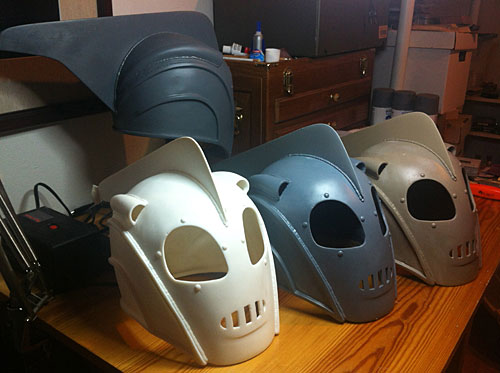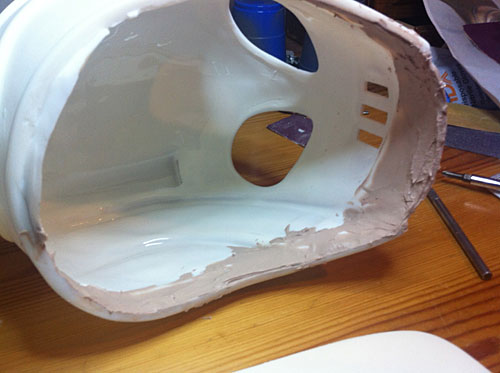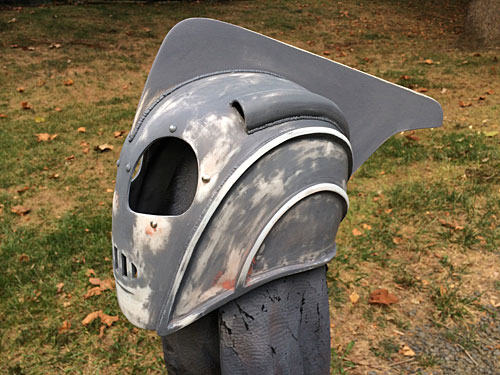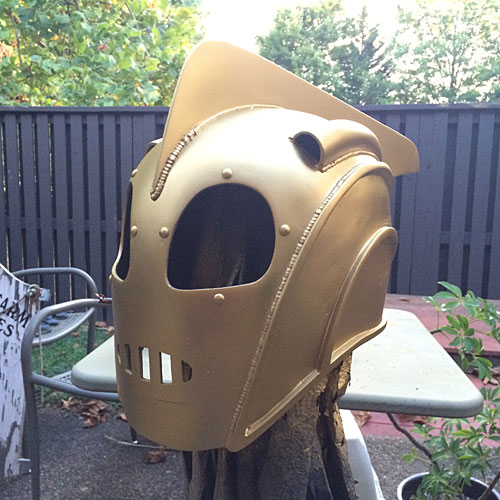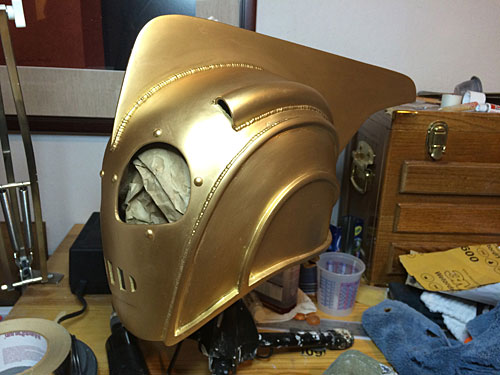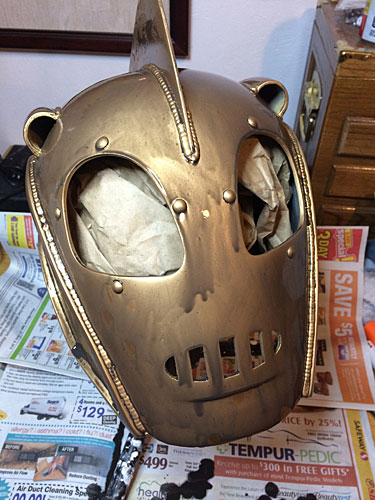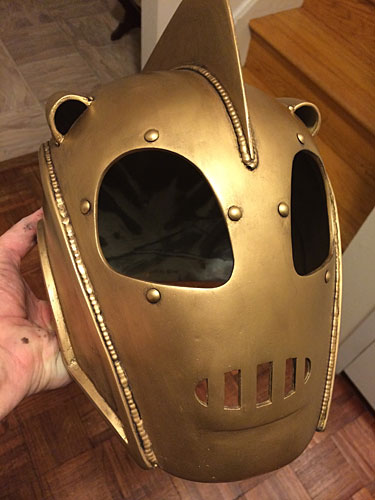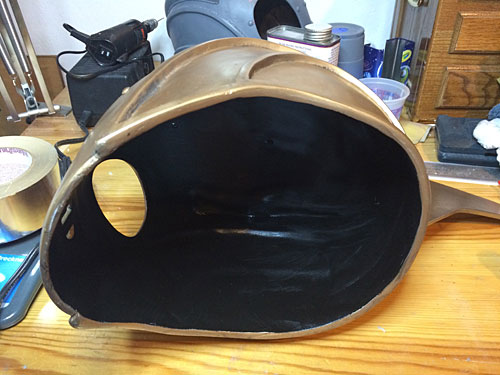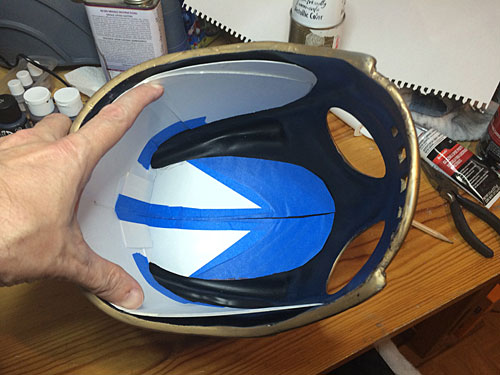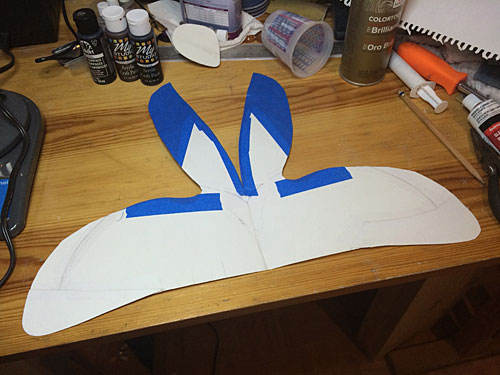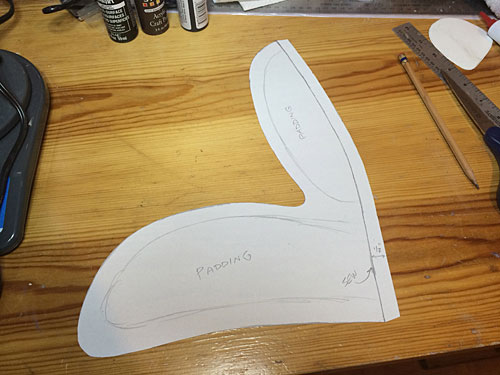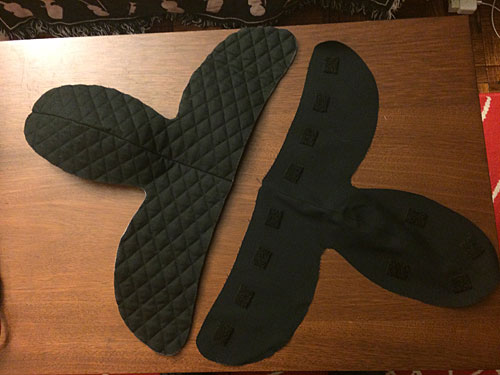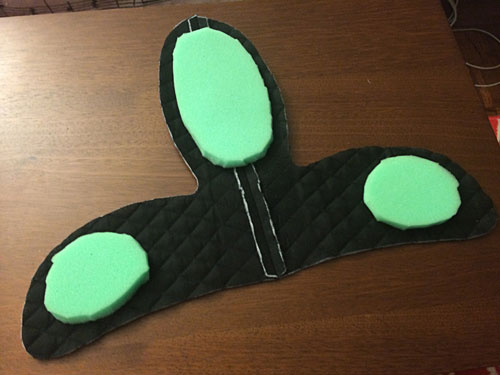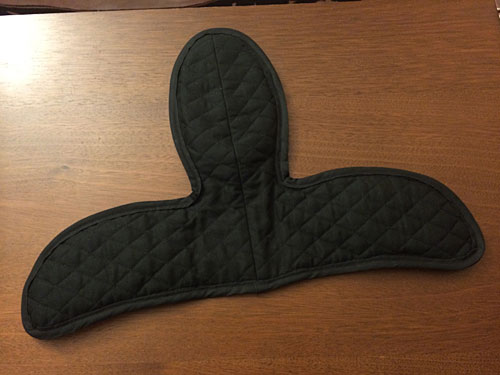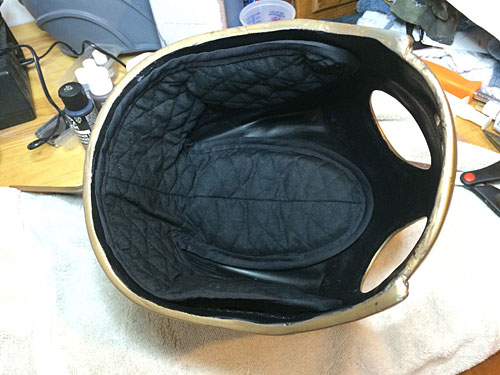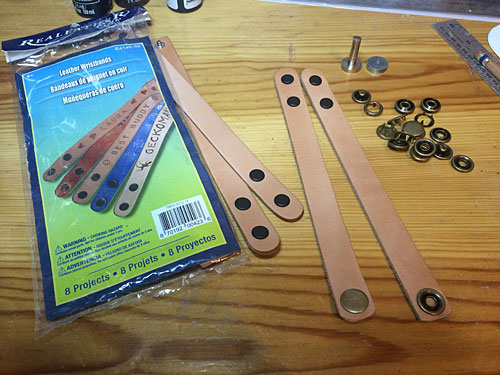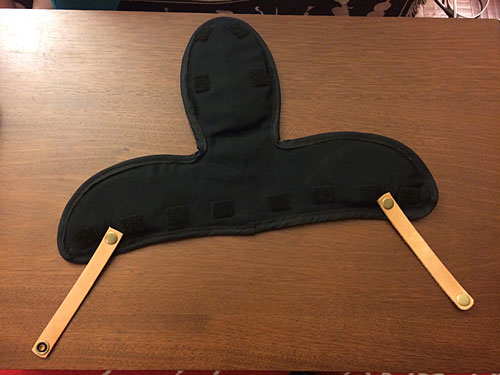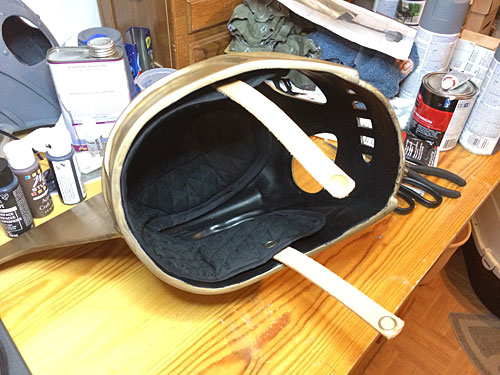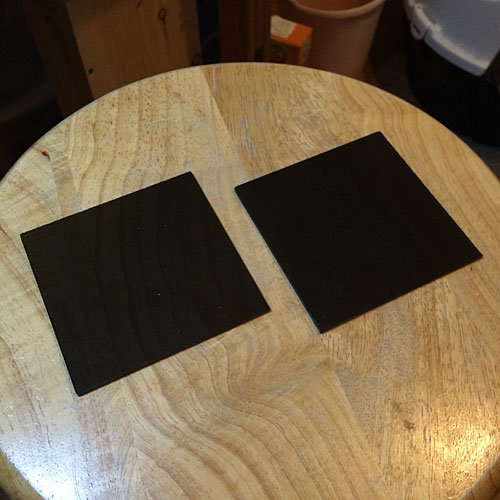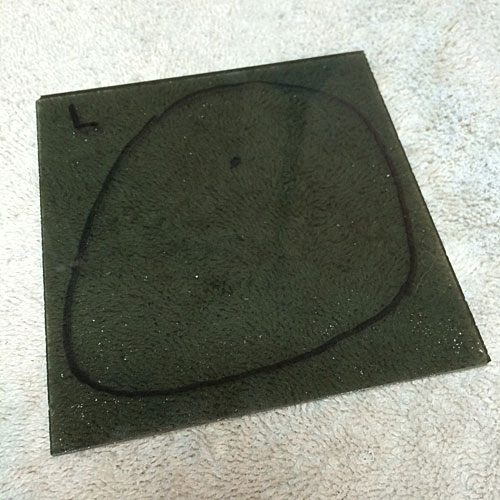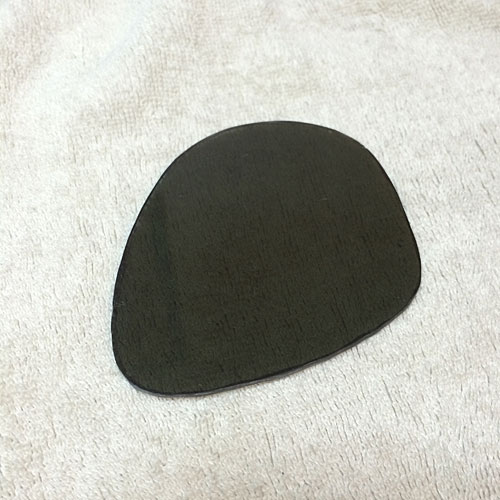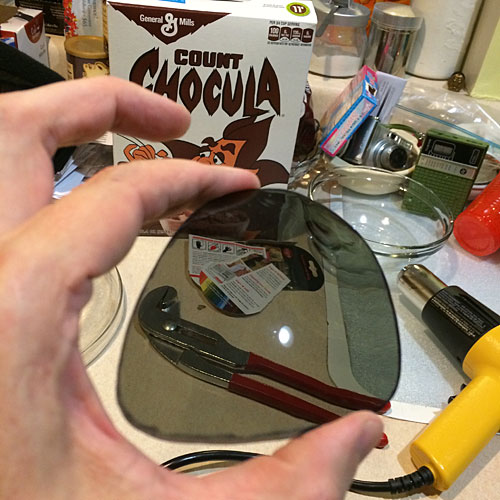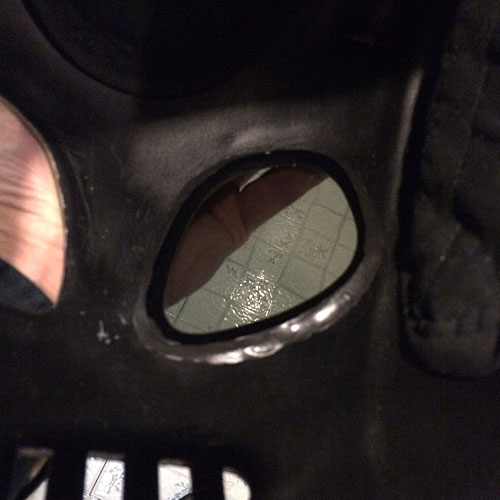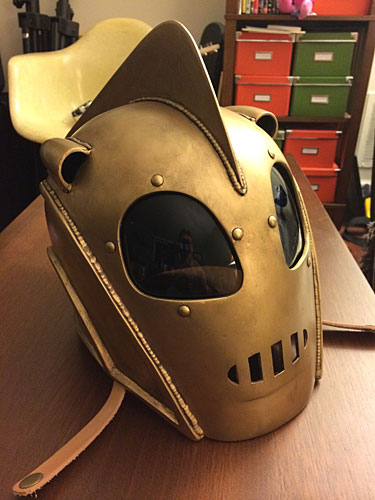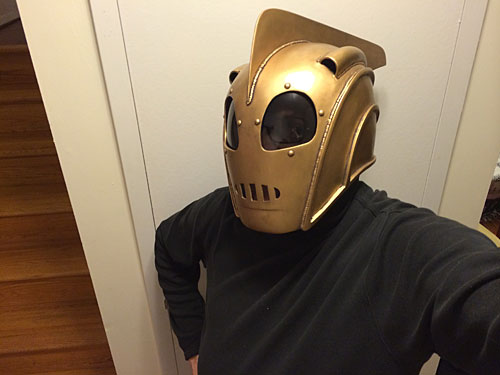Now to cast the fin.
First, I built a wooden box that could be completely disassembled, with an inside depth of 1 1/2" and big enough to leave a half inch or so all around the edges of the fin.
Next, I sealed up the corners with Monster Clay, and filled it up halfway with air-dry clay. Then I embedded the fin in it up to its mid-point. I added a "spout" to the end of the fin, made out of Monster Clay, to leave a place to pour in the plastic and let air escape. I used various items (including a small rubber ball) to add dents to the clay so I'd have some "keys" to help make sure the two halves of the rubber mold line up perfectly later.
Next, I poured silicone into the mold. It took a LOT of silicone. I used up the two pound I'd got from BITY Mold Supply, and added about a pound I had left over from the helmets, and it still didn't get quite all the way to the top.
Not wanting to wait a week until more silicone arrived to finish this half of the mold, I filled the rest of this side (after the silicone cured) with melted Monster Clay. I put it in the oven in a pan at 200 degrees and waited for it to get liquified. Then I poured it in, and used the side of a metal ruler to make sure it was good and flat.
Now I could flip it over and remove the air-dry clay, which stuck to the silicone a bit more than I would have liked. I hadn't used any mold release, but that might have helped. I washed the rubber to get all the clay off it, and set it aside, waiting for more silicone to arrive.
The mold is cleaned up and ready to have the second side poured. I carefully put the master fin back in, but it didn't fit down perfectly. As a result, the final fins will be slightly thicker at the bottom edge, and will need to be sanded a bit to make sure they fit well into the slots on the helmets. I sprayed it thoroughly with mold release (make sure it says it'll work to keep silicone from sticking to silicone!)
The second side was poured (which used every drop of the new 2 pounds of silicone), and after it cured, I carefully disassembled the mold (the silicone really stuck to the wood), and now I have the two rubber mold halves. There's the master part on top. Its job is done. I had to trim some rubber off all around, and also inside the mold in the places where it flowed slightly under the fin. As I said, that'll make those parts slightly thicker in the final castings.
Mold all assembled and ready to pour the first one. This is the first time I've ever done this, so I'm a little paranoid. I've places a lot of newspaper underneath in case it leaks out the bottom at all.
Poured and curing. It used about 7 1/2" ounces of resin, less than I expected (for a change). It also didn't leak out onto the floor. I waited for it to cure with great anticipation...
Separated the mold halves, and the casting came out perfectly, just a little bit of extra plastic to trim off, plus the plug at the tail end where I poured it in.
I cast three fins for the three helmets. I didn't really need to match the colors (since they're all going to be sprayed with gray primer), but I did it anyway. I messed up, though. For the second one, I tried using a little less resin, and miscalculated and had to mix up another batch. In my haste, I grabbed the gray pigment instead of the brown. So that one ended up two-tone.

Here's a close up of the plug that'll have to be trimmed off.
And there they are, all parts cast and ready for final filling, sanding, and priming.

